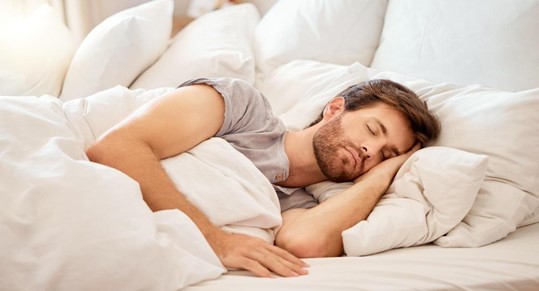
Male patients face many complications while treating cold or sinus infections since they depend on CPAP machines during sleep apnea. The congestion, the runny nose, and sinus pressure can make it unbearable to wear your CPAP mask and use the machine, but you shouldn’t abandon your therapy sessions in these times. However, stopping the CPAP needs to be avoided because it can improve sleep and enhance your rate of healing. Below you will find some tips for using a CPAP machine during a cold or a sinus infection:
BiPAP (Bilevel Positive Airway Pressure) machines are needed to them which are having obstructive sleep apnea (OSA) because these machines keep the airway patent all through the night. During a cold or especially a sinus infection your airways get even further blocked because of the congestion – so using your CPAP machine is absolutely crucial. If you fail to adhere to therapy you will end up having sleeping disorders, your apnea is likely to worsen and your recovery from sick will also take longer.
Adjust the Humidity Settings: Perhaps one of the most significant ways of making the use of your CPAP machine less uncomfortable when you are乃2 a cold is by changing the humidity levels. Cold air dries the lining of your nasal passages making congestion worse when you inhale dry air. Another way of making the air in your CPAP device moist is by increasing the level of humidity to help clear up the congestion. CPAP machines are equipped with humidity control which means you should find the most comfortable level of humidity to use.
Use a Heated CPAP Hose: Lastly, if your CPAP machine has a heated hose feature, so ensure to use it if you are having cold issues. It warms the air before you breathe it through your mask and also a hot hose can reduce the valve noise whilst also helping those with nasal issues. This can help make breathing while wearing your CPAP equipment much easier and more comfortable.
Try a Nasal Decongestant or Saline Rinse: To reduce the congestion before use of the CPAP machine you can use a saline rinse or nasal spray to help clear any congestion. Epstein, sponsored Salt water exits the nasal passages together with mucus and other allergens and an irritant, thereby helping clears nasal blockage for some time. With your doctor’s consent, nasal decongestant spray or medication may also be taken to help with the stuffiness. Be careful not to use such sprays too often because doing so may lead to congestion, or what we refer to as rebound congestion.
Switch to a Full-Face Mask: If you normally wear a nasal mask for the CPAP mask, try using a full-face mask when you have the common cold or sinus inflammation. Full face mask covers your mouth and nose making it possible for you to breathe through the mouth if your nose is blocked. This can help ensure you use your CPAP machine for continuous positive airway pressure as you are free from chocking or feeling there is someone holding your throat.
Clean Your CPAP Equipment Regularly: One should always wash the CPAP machine they use but is more crucial especially when one has the flu. Pathogenic organisms hovering to your mask, tubing as well as humidifier may cause a delay in your recovery time, or reinfection. Regularly wash your CPAP mask, air tubing and humidifier insert with warm soapy water or a CPAP recommended cleaner. All these parts must be allowed to dry for some time before assembling again.
Stay Hydrated: Drinking fluids can also thin it out so that your nostrils can easily irrigate themselves. This may be due to the fact that the human body is mostly composed of water, factors such as drinking water frequently will see to it that one does not have to struggle so much with congestion when using CPAP machines. Exclude caffeine and alcohol because they have a dehydrating effect and worsen congestion.
Use a CPAP Machine with an Auto-Adjusting Pressure Setting: If your CPAP machine has an auto setting (APAP), use this during an illness as this changes pressure depending on the stage of sleep automatically. This allows it to vary the pressure depending on the degree which guarantees that you get enough airflow even with congestion.
Sleep with Your Head Elevated: Sleep with an extra pillow underneath your head to reduce the pressure of your face towards the mask and to facilitate good breathing when using this CPAP machine. It also allows you to burst your sinuses given the force of gravity assists in drawing out the mucus.
Take a Hot Shower Before Bed: Taking a hot shower in the morning will help to clear your sinuses before using the CPAP machine in the house. The hot water to take shower is recommendable for helping to ease congestion so that one can breathe easily.
If even these hints remain rather helpful, and if it is still completely difficult for you to use your CPAP machine or if your cold or sinus infection worsens, do not hesitate to consult your doctor. They may provide you with other treatments or adjustments to your CPAP treatment in order to improve your conditions.
Sometimes, when one has a flu or a sinus problem, sleeping with the CPAP machines can be very hard, but it is very important to continue the sleep apnea treatment in order to have a healthy rest. Ny also using full face mask, ensuring you are well hydrated and cleaning your equipment, you can continue using CPAP even if you are sick. These are some of the steps to avoid falling out of treatment path and help to recover from the illness easily without compromising on the sleep apnea treatment.